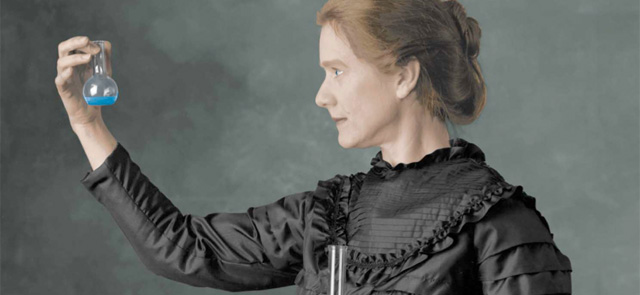Subscribe to our newsletter
International Women’s Day – Women in Science
Being International Women’s Day, Alex Hodgson from ReadCube would like to take a second and thank all the amazing women in science past and present. In doing so, she’s sharing with us some of her particular favorites – but we would love to hear yours too! So please do make sure you share them with us!
 Dorothy Hodgkin – Born in Cairo in 1910, this British scientist is noted with discovering protein crystallography, which is a method of x-rays that can determine the arrangement of atoms. She became interested in chemistry and in crystals at about the age of ten and was encouraged by a friend of her parents who gave her chemicals and helped her analyze them. When returning to Oxford in 1934, she would continue the work that earned her a Nobel Prize in Chemistry in 1964. Her work was also vital in the studies of insulin and penicillin.
Dorothy Hodgkin – Born in Cairo in 1910, this British scientist is noted with discovering protein crystallography, which is a method of x-rays that can determine the arrangement of atoms. She became interested in chemistry and in crystals at about the age of ten and was encouraged by a friend of her parents who gave her chemicals and helped her analyze them. When returning to Oxford in 1934, she would continue the work that earned her a Nobel Prize in Chemistry in 1964. Her work was also vital in the studies of insulin and penicillin.
Katharine Dexter McCormick – Only the second woman to graduate from MIT, Katharine Dexter McCormick is a name that every woman today should know. Katharine funded what The New York Times called the “most sweeping sociomedical revolution in history… [whose] impact on the United States and other nations [is] almost too vast to analyze.” She was responsible for funding the reseach that discovered the birth control pill as well as putting millions into early women in science funding programs.
Marie Curie – Together with her husband, they performed ground breaking and risky procedures in their laboratory. On the heels of the discovery of radiation by Henri Becquerel in 1896, she developed ways to separate radium from radiation leading to many current practices, including chemotherapy. Later in life, she became the Director of the Curie Laboratory in the Radium Institute of the University of Paris. For her work, she was awarded various prizes, including the Nobel Prize for Physics in 1903 and again for chemistry in 1911.
Barbara McClintock – Born in 1902, this American was one of the world’s most noted cytogeneticists, a geneticist who studies the structure and function of the cell with particular interest in chromosomes. She attended Cornell University in 1927 where she received a PhD in botany. However, after an undergraduate course in genetics, she found herself fascinated by the subject. Barbara devoted her studies to seeing how chromosomes change during the reproduction process. It was during this work that she discovered that genes could move between and on chromosomes, leading to many other important discoveries. For this, she was awarded the Nobel Prize in Physiology or Medicine in 1983.
Rita Levi-Montalcini – The oldest living Nobel laureate, she was born in Italy in 1909. Another female scientist who faced roadblocks by her father, she was forbidden to seek an education. However, much like her predecessors, she overcame and went onto to graduate from medical school. Her collaborative efforts with Stanley Cohen would lead to a breakthrough in neurological science for the discovery of the nerve growth factor. This would lead to their winning of the Nobel Prize in Physiology or Medicine in 1986.
Rosalind Franklin – Born in Great Britain in 1920, Rosalind decided to be a scientist at the age of 15. However, she hit a speed bump when her father refused to pay for higher education, believing women were unfit for it. With some prodding from family members, Rosalind was finally able to go where she was able to assist in making amazing breakthroughs in DNA research. She was able to adjust x-ray equipment to produce a fine beam and extract DNA fibers like never before. Unfortunately, her life was cut short at the age 37 by ovarian cancer. But her name and work still live on the Rosalind Franklin University of Medicine and Science in Illinois.
Jane Goodall – Named by her biographer as “the woman who redefined man,” Jane changed the perceptions of the connections between primates and people. Born in 1937, she traveled to Tanzania at the age of 23 to enter the world of the chimpanzee bringing little more than a notepad and binoculars. With patience, she was able to enter the world of the chimpanzee, be accepted as one of them, and learn more than ever imagined. To hear Jane in her own words, you can view a speech on what separates us from the apes here.
Elizabeth Blackburn & Carol Greider – Together they earned the Nobel Prize in Physiology or Medicine in 2009, along with Jack Szostak, for the discovery of how chromosomes are protected by telomeres and the enzyme telomerase. Blackburn was born in Australia in 1948 and earned various medical degrees there before earning a PhD in Molecular and Cellular Biology at Yale University. Greider was born in San Diego in 1961, and while completing a PhD in Molecular Biology at the University of California, Berkeley, studied under Blackburn. Together with Szostak, they discovered telomerase which is believed to have a retroviral origin.
